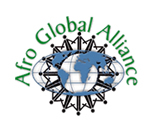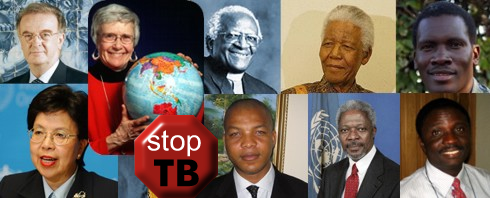PLANNING
TB ANYWHERE IS TB EVERYWHERE is the theme for 2007 World TB Day, March 24th, offering a message of urgency and shared responsibility. Through unified action on all levels, we can work towards a world finally free of tuberculosis.
 The 2007 theme TB ANYWHERE IS TB EVERYWHERE emphasizes that although TB is a preventable and curable disease, it remains a global emergency. The theme reflects the chronically inadequate investment in TB control, surveillance, research and development as well as TB's deadly synergy with HIV.
The 2007 theme TB ANYWHERE IS TB EVERYWHERE emphasizes that although TB is a preventable and curable disease, it remains a global emergency. The theme reflects the chronically inadequate investment in TB control, surveillance, research and development as well as TB's deadly synergy with HIV.
The 2007 theme addresses the challenges to country TB programme performance that affect TB control progress on a global scale. Achieving the TB-focused targets of the United Nations' Millennium Development Goals depends on effectively raising and addressing country-level challenges through a unified global campaign.
In 2007, the World Health Organization will report on whether the 2005 global TB control targets of 70% case detection and 85% treatment success have been achieved.
Fifty countries have met the 70% detection target and approximately 25 countries have met both targets. This success represents a major landmark in TB control history and proves that TB control is effective, even in countries with limited resources. The predicted global average treatment success rate of 84% in 2005 is undeniably good, and the case detection rate is likely to be 60% in 2005. However, 2 million or so active TB cases that occur each year are being missed.
To help overcome the challenges that keep TB a global threat, there is an urgent need to push for full funding of the Global Plan to Stop TB (2006-2015) and work for implementation of the Stop TB Strategy. It is time for all governments and the donor community to meet their full responsibility to Stop TB, and for decision-makers to stand alongside people and communities affected by TB.
The World TB Day theme includes a number of supporting messages that are designed to emphasize the importance of:
- Improved endemic country financial contributions to TB control;
- Community involvement in the response to TB;
- Scale up of donor investment; and
- The need for decision-makers to protect communities from the threat of extensively drug-resistant TB (XDR-TB) and HIV-related TB.
A strong global campaign depends on consistent delivery of coherent messages. Each of the supporting messages developed to address the above issues intentionally includes the "Stop TB" phrase, so that each can work as a "stand-alone" message with the TB ANYWHERE IS TB EVERYWHERE theme.
We encourage you to use the following supporting messages with the main theme in your campaigns:
- Invest now to Stop TB
- Research now to Stop TB
- Act: People can Stop TB
1. Invest now to Stop TB
Through intensive, immediate and generous investment from governments, multilateral agencies, foundations, businesses and individuals we have the power to Stop TB.
The Global Plan to Stop TB - if fully funded - provides the work plan for fighting TB. The Global Plan outlines how TB mortality and prevalence could be cut in half by 2015 and TB eliminated by 2050. With a total cost of US$56 billion, a funding gap of at least US$31 billion still exists, including US$22 billion for implementation and US$9 billion for the research and development of new tools.
In order to meet the funding gap and save millions of lives, endemic countries must act on commitment to control TB, including investments in health care infrastructure.
Bilateral and multilateral funding and financial initiatives must be accelerated. We look to the G8 to demonstrate their leadership, follow through on their commitments, and meet their 'Fair Share' contributions to TB control.
Donor countries outside of the G8 must increase contributions to the Stop TB Partnership technical partners for assistance to endemic countries and to the Global Fund for AIDS, Tuberculosis and Malaria, which currently provides two-thirds of external funding for TB.
Businesses must also play a stronger role to stop TB at the workplace and in communities.
2. Research now to Stop TB
Effective TB drugs, diagnostics and vaccines are essential in the fight against TB. We must protect populations by ensuring we provide them with the best solutions possible. That is why meeting the funding gap for TB research and development is essential to provide us with new and more effective tools.
Substantial new investment in the development of new TB diagnostics, drugs and vaccines is fundamental to ensure that we will continue to have the capacity to protect those at risk of XDR-TB infection and cure those affected with XDR-TB.
3. Act - People Stop TB
People who are vulnerable to TB are the best-placed to talk about the challenges they face on a daily basis and how to improve TB programmes from their perspective. A key component of the Global Plan to Stop TB and the Stop TB Strategy is to empower people with TB, and affected communities.
Giving explicit priority to community participation in TB diagnosis and care reinforces that commitment, and is consistent with the Patient's Charter for Tuberculosis Care and the 'Call to Stop TB'.
TB/HIV:
TB is a leading killer of people living with HIV, and causes up to half of all HIV-related deaths in hard hit settings. HIV is the primary reason for increasing global TB rates particularly through its effect in sub-Saharan Africa. We can save lives NOW through collaborative TB/HIV activities and strengthened TB control.
XDR-TB:
Drug-resistant TB poses a grave global public health threat, especially in populations with high rates of HIV. XDR-TB requires an immediate and urgent global and country response to ensure TB control is strengthened. Drug-resistance occurs as a result of under funded, weak health systems leading to poor TB control programmes.
ACT now to Stop TB - ensure full funding of the Global Plan to Stop TB.


